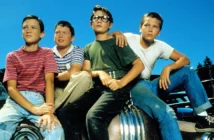India is often imagined in relation to mystery, like a mysterious place of miracles and serpents, and so are some of its earliest cinematic stars from the 1920-30s. If the country awakens today to the front page of The Times of India, featuring an A3-sized picture of Sultana Razaaq — the venerated daughter of Fatma Begum, India’s first woman filmmaker — it would ask itself a lot of questions: more about Bombay cinema, its history, and its mythical stars. I use the word ‘mythical’ after a lot of introspection. It’s predominantly because these stars are difficult to imagine to have existed in real-time; they are the pioneers, the classicists and the rulers of Indian cinema, the first experimentalists.
This sense of distance and unimaginability persists because these stars either left the limelight or passed away even before the introduction of upscale journalism. No interviews or substantial information seems available about these fancy embodiments of iconicity. They seem to exist only within the cinematic screen, much like the poetry of Mirabai. Therefore, it’s understandable for India to not recognise figures like Dinshaw Bilimoria and Shanta Apte, as they exist outside of India’s populist eye. These figures are affected by the politics of remembrance. India remembers Dadasaheb Phalke, Devika Rani, Durga Khote, and even Shyam. But Bilimoria or Shanta Apte exist within the cusp of stardom and oblivion, prone to be forgotten easily.
I’m still attempting to deepen my understanding of this divide of remembrance — why some stars are cultivated in public memory while others fade away. While I reflect on that, I recall Shanta Apte’s proclamation that Indian cinema has no stars — and those who are soon wither away as the golden yesterday, awaiting to perish into the ashes of a dreamy past, while new faces kiss their dreams.
This FaceoftheMonth remembers one such star. As a name, Shanta Apte was nothing unusual, almost familiar like a neighbour; but as an actor, she was boundless, fierce, uncompromising – the new face of Indian feminism and nonconformist principles. The 1930s were, indeed, ruled by Shanta Apte: from engaging in hunger strikes before the senior-most owners of Prabhat Film Company to change a clause in her contract — allowing her to collaborate with other film companies — to allegedly barging inside the office of Baburao Patel, the founder of India’s first film magazine, and beating him up with a stick, stories about Apte’s fiery temperament and unflinching attitude towards the ‘men of the industry’ were both widely known and celebrated.
Empowering stories of other women and working within various film industries, like Jaddanbai and Fearless Nadia, further strengthened the gravity of Apte’s heroism. More important was Apte’s associations with V. Shantaram which materialised as three monumental classics of Indian cinema — Amrit Manthan (1934), Amar Jyoti (1936), and Kunku (1937) — and which helped develop Apte’s persona as a ravaging tornado, a woman of rare mettle. It’s the same persona which not only legitimised her attacks on the patriarchy-driven industry, but also etched her memory in relation to the rising women’s movement(s). Even though Apte’s opinions on women’s entry into the film business could be cited as paradoxical, or even ironic, her concern was not towards limiting women from joining films, but rather towards urging them to stay alert, aware of their contractual rights, and unafraid to speak about their concerns, comforts, and the conditions of studios.
I still remember watching Apte for the first time in Kunku (1937), and how fascinating that experience was: not just the feel of watching Kunku, but being completely blown away by the acting prowess of Shanta Apte. Her entire demeanour as being frustrated and angry at her unjust marriage to an older man was pathbreaking; quite more like an unrepeatable performance. She was always in character, always angry, and these undertones easily reflected themselves in Kunku. It’s flummoxing to think why, after Kunku, Apte returned to the domain of the mythological, seldom being seen in the social film with rare exceptions like Duhai (1943). And as the 50s unfurled, Bombay seemed to have lost track of Shanta Apte and her stardom. The singing sensation from the 1930s was reduced to an echo . . . empty of thrills and music. Shanta Apte passed in 1964. Regardless, it’s important to recognise how one of India’s iron ladies — we know who the other one is — was capable of inspiring grassroot changes, despite emerging from a space that was frowned upon, almost underestimated as closeted vulgarity.
Her story is one of brazen courage, unfettered defiance, and a hopefully positive tomorrow, and India should begin acknowledging such lost identities and placing them into a bigger picture. Because there should be no remorse in remembering heroes . . . iconic idols.
The ‘Amar Jyoti’ thus keeps burning . . .
dedicated to Mehul Thakur



